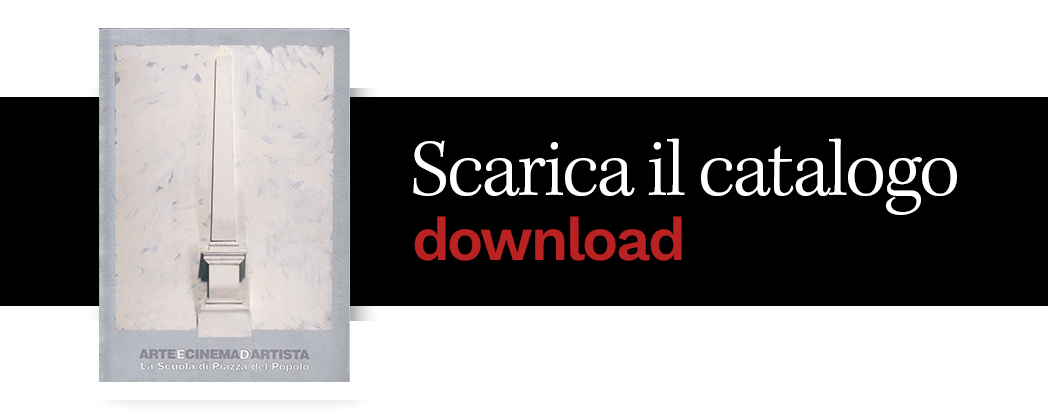
Thursday 10 June 2004 at 6.30 p.m. in via Margutta 51/a in some of the former painting and sculpture studios Arte e cinema d’artista. La Scuola di Piazza del Popolo, will be inaugurated the exhibition or, presented by Prof. Maurizio Calvesi, curated by Simona Cresci and Alberto Dambruoso on a project by Fabio Falsaperla.
An unprecedented review on artist cinema, curated by Giorgia Calò, will include the projection of the most representative film works by the artists belonging to the School for the entire duration of the exhibition. For the occasion, the new space of Galleria La Nuvola (La.ra Arte) will be inaugurated and the adjacent exhibition spaces will be used in order to create a route that aims to interact with the public, leading them along an “obligatory path” with the aim of making the most of the work of the artists on show.
The splendid building housing the exhibition and the surrounding courtyard and gardens make the itinerary particularly interesting and pleasant. The aim of the exhibition and the film show is to revive for the public that particular and never repeated artistic and cultural climate that developed in Rome from the early 1960s onwards and that featured a small number of young artists such as Franco Angeli, Mario Ceroli, Tano Festa, Giosetta Fioroni, Sergio Lombardo, Francesco Lo Savio, Jannis Kounellis, Renato Mambor, Fabio Mauri, Pino Pascali, Mimmo Rotella, Mario Schifano, Cesare Tacchi and Giuseppe Uncini.
Eager to participate in a new intellectual renaissance, the artists of the Scuola militated in the meeting places that then represented the cradle of an animated cultural renewal. After the informal experience born out of the inner turmoil suffered by Western societies during the Second World War, a group of artists working in Rome took their cue from the iconographic and poster repertoire that arose within the mass-media society that was then being defined, with the aim of achieving a new and possible figuration.
It was a topical moment in the history of Italian and international art, also favoured by a great synergy between poets, writers, directors, artists, gallery owners and patrons, who were united not only by their belonging to a well-defined area of Rome – the Piazza del Popolo with its cafes, restaurants and art galleries, which in those years were truly sacred meeting places – but also by a mutual exchange of observations, reflections and criticism that favoured the development of their respective research. Forty years later, very little has remained of that fascinating climate: the streets, cafés, and meeting places that were once the cradle of a cultural renovatio have now all but disappeared, and what remains is only the aura of past memory.
Many of the galleries that once supported and promoted the School’s artists have closed their doors, decreeing a diaspora of the latter. Within this framework, only a few galleries are left that are closely following the artistic activity of the 1960s and 1970s, among which the gallery La Nuvola, located in the heart of Rome, a stone’s throw from Piazza del Popolo, has stood out in recent years for the uniqueness of the works of the aforementioned protagonists.This is why the curators and organisers deemed it sensible to host the event within such a prestigious space in which the gallery’s activity stands out. With the film review, the intention is to outline an exhibition itinerary capable of suggesting different readings and interpretations, an opportunity to critically reflect on the meaning of artists’ films through the cinematographic work of the protagonists of the Scuola di Piazza del Popolo from Mario Schifano (“Umano non umano”) to Giosetta Fioroni (“La coppia”), from Franco Angeli to Renato Mambor (“A passi di Mambor”). Films by Sandro Franchina (“Morire gratis”) and Franco Brocani (“Necropolis”) will also be screened, art films in which some of the artists of the Scuola di Piazza del Popolo participated. As an opportunity for confrontation and exchange, a number of documentary films have been made by Alexander Jakhnagiev (“Colours”), relating to the leading artists of the Roman season.

